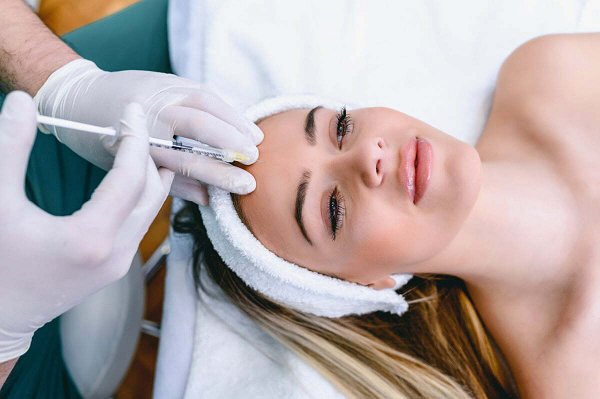Botox® is no longer new. But it is a buzzing topic among millennials, as well as those who came before them, and those who are coming after them. There is no shortage of Botox® clinics in most major cities. But if you’re still curious about it, it’s natural to ask questions. For example: what does Botox® do?
We’ll answer that below.
Table of Contents
What is Botox®?
Botox® is the brand name of a drug made from a purified protein, a neurotoxin, produced by the bacterium called “Clostridium botulinum.” Particularly, it is made of a variety known as “onobotulinumtoxinA.” To say it concisely, it is a botulinum toxin. This type of botulism, in its pure and strengthened form, can cause severe illness or death. However, this is not how it is used medicinally or cosmetically.
There are other types of prescription botulinum toxins out there, which are used similarly to Botox®. They are, namely:
- abobotulinumtoxinA (sold under the brand name Dysport)
- incobotulinumtoxinA (sold under the brand name Xeomin)
- rimabotulinumtoxinB (sold under the brand name Myobloc)
The different types of prescription botulinum toxins are not interchangeable. Doctors and nurses who administer these drugs must be trained to do so for each one.
What is Botox® used for cosmetically?
Botox® is used medically to treat certain muscular conditions. Cosmetically, it is used to remove wrinkles by temporarily paralyzing muscles.
That is its main function: to paralyze muscles. On purpose.
How does Botox® work as an anti-aging treatment?
Botox® is injected into the face using very small, thin needles (doctors often use insulin needles).
When small amounts of Botox® are injected into a muscle, the substance can block the signal from a neurotransmitter to the muscle, causing the muscle to relax and soften by paralyzing it. When the muscles can’t contract, the skin overlying them becomes smoother and less wrinkled. This is what makes Botox® such a popular anti-aging treatment.
Cosmetically, Botox® is most commonly used on the forehead, crow’s feet around the eyes, and frown lines between the eyebrows. However, it can be used in areas such as:
- Around the lips (to create a Botox® lip flip, or to smooth corners of the mouth)
- Neck bands (i.e. platysmal bands)
- Jowls
- Nose tips
- Brows (to raise them)
- Bunny lines
- Chin dimples
- Gummy smiles (above the lips)
Botox is a temporary treatment, and the effects typically last for three to four months before the muscle action gradually returns. The treatment can be repeated as needed to maintain the desired results.
What does Botox® not work on?
It’s important to note that Botox® is only effective for treating certain types of wrinkles, such as those caused by facial expressions like frowning or squinting. These are called dynamic wrinkles.
Botox® is not effective for treating wrinkles that are caused by sun damage, aging or other factors. These are called static wrinkles. They appear on your face when you are not making facial expressions.
There are some people who believe that by stopping facial expressions, Botox® can prevent static wrinkles in the long term. This is because dynamic wrinkles are what eventually cause static wrinkles.
Botox® versus dermal fillers
Botox® is not the same as dermal fillers. Dermal fillers volumize the face to give it substance and plump. They can reduce static wrinkles while also shaping the face. For example, they can give someone a cheek lift, or define the jawline to look more masculine. They can also raise nasolabial folds, so they are not as pronounced. Botox® cannot do this.
Botox® and dermal fillers can often be used together. When they are used together in multiple parts of the face, the procedure is called a non-surgical facelift.
Is Botox® safe?
The most common side effects of Botox® are bruising and swelling at the injection sites.
Sometimes, unintentional paralysis can happen with Botox® treatments. While this is often due to improper technique by the practitioner, it can happen unexpectedly even by the most experienced doctors. For example, an eyebrow may be raised too high, or too low by accident. But these cases usually resolve as the Botox® wears out, in three or four months.
There are more severe possible side effects of Botox®, but they are rare. A good practitioner will make you aware of the known side effects of Botox®.
Botox® is only FDA approved for very specific uses. It can be used off-label by doctors for other requests (such as for lip flips or neck bands, which are not designated uses of Botox®). If you are concerned about side effects, you may want to ask your doctor or nurse to stick to the FDA approved uses of Botox®. Cosmetically, these would cover the forehead lines and crow’s feet only.
What have we learned about Botox®?
Botox® is a very common treatment for wrinkles and lines on the face. While it does have medical uses, it is mostly popular for its anti-aging effects. Some believe it can prevent wrinkles by stopping the facial expressions that eventually lead to them. The paralyzing function of Botox® is what makes it so popular. It works by stopping the neurotransmitters that cause muscles to contract. When they are stopped, the skin appears smooth.
